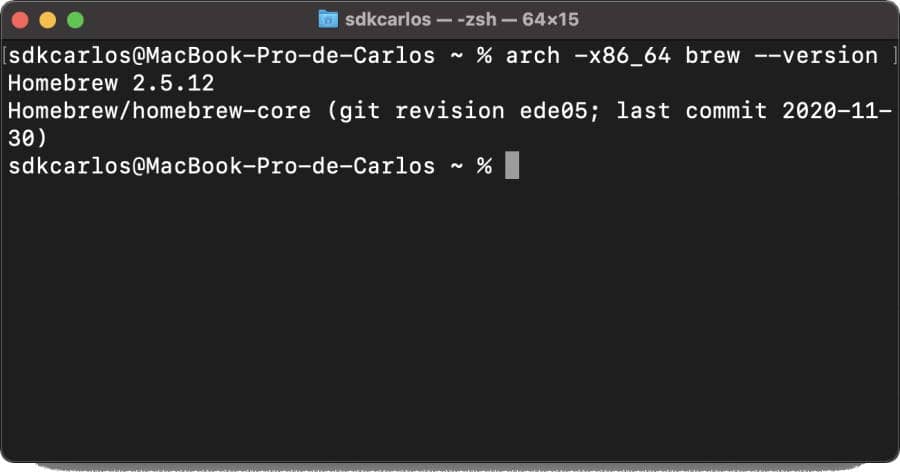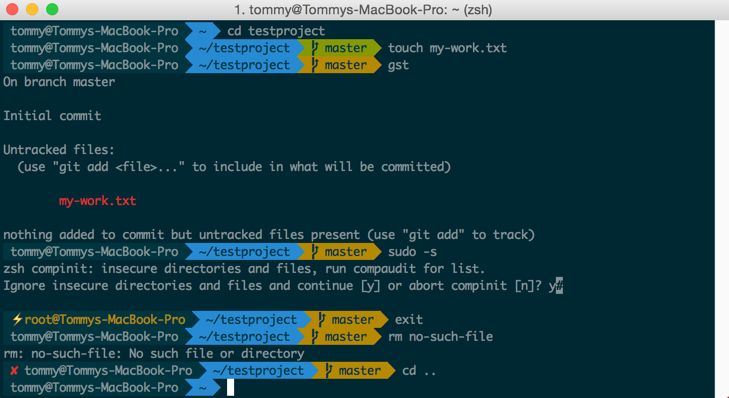Edit the brew.rb file to get this: # 10.10 stands for Mac OS Yosemite # 10.11 stands for Mac OS El Capitan if MACOS and MACOSVERSION MACOSVERSION!= 10.1 and MACOSVERSION!= 10.11 abort Homebrew requires Leopard or higher. Ruby macos homebrew package-manager brew 4 packages Ruby BSD-2-Clause 5,829 25,533 21 (8 issues need help) 19 Updated Jan 27, 2021 homebrew-cask-fonts.
Special Edition for those that have prior installations
Special Edition: macOS 11.0 Big Sur Development Environment
This is a guide to help those with prior Homebrew mutliple PHP-based installations that are looking to upgrade to the new Hombrew/core PHP setup from the prior Homebrew/php keg which is now deprecated.
With the deprecation of Homebrew/php tap, many of the prior formulaes we used in this guide are no longer available. The cleanest way to migrate from the old brew formulae to the new pecl package approach is to remove everything PHP-related and reinstall with the new instructions.
The first step in this process is to update all the latest packages then upgrade them. This will actually 'migrate' the core PHP packages (which are the only ones supported), but there's a bunch of symlinks utilized that could cause problems down the road, so after upgrading, we'll remove all PHP packages, to provide a fresh start:
You can then double check the current installed PHP packages with:
Now we just need to remove everything:
Don't worry if you don't have all these packages installed, this is just a cumulative list and it will skip over anything that's not installed.

Crack autocad 2019 64 bits. Now we can check to see if anything PHP-related is left:
If you don't see anything you are all good. If something is still left, you can uninstall those individually using the same brew uninstall --force syntax as above.
Homebrew You Are Using Macos 11.0
Now we want to clean out the old configuration options for PHP:
Now you've cleaned up your prior installation, you can jump to the PHP Installation section of Part 1 of the guide. Stalker tv subscription.
Please enable JavaScript to view the comments powered by Disqus.What is macFUSE?
macFUSE allows you to extend macOS's native file handling capabilities via third-party file systems.
Features

Install Homebrew Macos 11
As a user, installing the macFUSE software package will let you use any third-party FUSE file system. Legacy MacFUSE file systems are supported through the optional MacFUSE compatibility layer. Cakewalk vst adapter download.
Homebrew Macos 11.2
As a developer, you can use the FUSE SDK to write numerous types of new file systems as regular user space programs. The content of these file systems can come from anywhere: from the local disk, from across the network, from memory, or any other combination of sources. Writing a file system using FUSE is orders of magnitude easier and quicker than the traditional approach of writing in-kernel file systems. Since FUSE file systems are regular applications (as opposed to kernel extensions), you have just as much flexibility and choice in programming tools, debuggers, and libraries as you have if you were developing standard macOS applications.
How It Works
In more technical terms, FUSE implements a mechanism that makes it possible to implement a fully functional file system in a user-space program on macOS. It provides multiple APIs, one of which is a superset of the FUSE API (file system in user space) that originated on Linux. Therefore, many existing FUSE file systems become readily usable on macOS.
The macFUSE software consists of a kernel extension and various user space libraries and tools. It comes with C-based and Objective-C-based SDKs. If you prefer another language (say, Python or Java), you should be able to create file systems in those languages after you install the relevant language bindings yourself.
The filesystems repository contains source code for several exciting and useful file systems for you to browse, compile, and build upon, such as sshfs, procfs, AccessibilityFS, GrabFS, LoopbackFS, SpotlightFS, and YouTubeFS.
